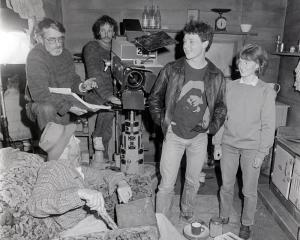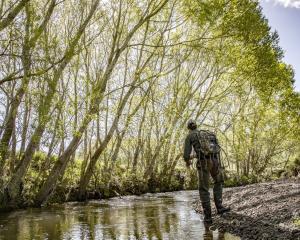
When we returned to New Zealand from the UK recently, I did not feel the usual level of excitement about being home. I have been wondering why.
Such thoughts were in my mind as we walked across the slopes of Mt Ruapehu. The bush was wonderful. It included native mountain cedars that I have only previously seen in the cloud forest on Flagstaff and Mt Cargill. I was told that the forest was very old as it had been protected from the Taupo eruption. A wonderful remnant of ancient New Zealand.
The objective of our walk was old but not ancient. It was a hut built by my wife’s school tramping club. We visited for a reunion on the exact day it was opened 60 years ago.
They had carried every bit of it over the side of the mountain piece by piece. It was still there and occupied by current school pupils, some still doing their Duke of Edinburgh awards as they had been doing 60 years previously. The visit was a reminder of life in a previous version of New Zealand that we loved.
The morning after the hut reunion, when out walking in Ohakune, I visited the railway station. It was, like Taumaranui in the old song, on the main trunk line. Beside it was "Railway Row" with its old railway houses, where one of my wife’s uncles lived and worked.
On the drive back to Wellington I noticed some old decaying dairy factories. They would have been supplied by local farmers, employed locals, supplied the local market and have been part of the local community. All relics of old New Zealand.
Back to the present. Now we have one huge farmer co-operative focused on exports, charging export prices to fellow Kiwis, and selling off iconic Kiwi brands. The new New Zealand.
Coming back down the modern Parapara from Ohakune to Whanganui through the steep North Island hill country there were still sheep in evidence as well as some forestry, but how long will that last?
When we drive through Lawrence these days it is all new forestry replacing the sheep farms, many owned by overseas corporates. It now seems likely that will also be the fate of Alliance when it is sold.
As we drive past Bendigo, we contemplate the worth of the new gold mine being fast-tracked. The economic benefit to New Zealand is being emphasised but of course the serious money will go to the parent company in Australia.
As part of mine preparation more local stations are being sold to these offshore interests, to join the many other iconic New Zealand high country stations already sold to overseas owners.
In current New Zealand we seem to be ripping the country apart and selling off the family silver in a desperate attempt to maintain our current debt-driven lifestyle. Revisiting the old hut and other relics of an older New Zealand shows that we know how to live with fewer consumer goods, higher taxes and more self-reliance.
We have been there and done that, and it was a pretty good way of living. It would be a difficult change to make but perhaps it would be preferable to the big selloff.
In the days of the old hut, we were a young and adventurous nation with a world-leading social policy, a principled stand on international affairs, and proud masters of our own destiny.
Now we have sold most of our banks, many of our businesses and much of our iconic land, have a substantial child poverty problem and a vacuum where our foreign policy once stood. Little wonder I was less excited than usual about returning to New Zealand.
Maybe we could do worse than to look back to an older, more principled and egalitarian New Zealand, in order to move forwards and rediscover some of the common sense and values that once made us a great little nation with a big heart.
— Despite it all, Emeritus Prof John Highton is happy to be home in Dunedin.











